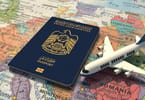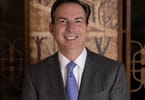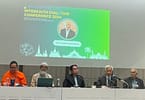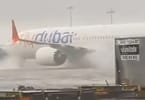Over the last 12 months or so, airlines have been increasingly counting on ancillary revenues as the main driver for registering strong profit margins going forward.
It is being acknowledged that maximizing ancillary return is not just about commissions, products, or technology but also about ancillary strategy, which should now be at the core of any airlines’ business.
Not only airlines from mature markets, but even in Asia, the likes of AirAsia have continued to excel in this department.
In December last year, AirAsia’s CEO Tony Fernandes said the per passenger ancillary spend increased by 52 percent to RM23.1 per passenger during the July-September quarter. Ancillary income then represented 10.6 percent of the total revenue, he had said. AirAsia had reported a net loss of 465.5 million ringgit in the July-September quarter, reversing a 180 million ringgit profit in the same period a year ago. It was the first quarterly loss for AirAsia since it was publicly listed in November 2004.
Any carrier, traditional or otherwise, must be conscious of its customers’ expectations when deciding which products will share its shelf space.
For their part, traditional airlines say there is no need to reach beyond the scope of travel-related services. It makes sense to stay focused on offering products that enrich the customer’s travel experience.
On the other hand, an airline like easyJet mentioned last year that the time had come for airlines to decide what sort of products and partnerships to focus on as they “stretch” their brand, indicating the possibility of suppliers becoming genuine e-commerce players in the years to come. They contemplate this especially in the wake of low-cost and no-frills airline websites garnering millions of unique visits on a monthly basis.
Before airlines are ready to expand their product basket and try extracting the “overall value” of the guest, it is vital to understand how has the definition of a ‘traveler’ evolved?
According to Hans Belle, VP and GM, Sabre Travel Network, Asia Pacific, who is scheduled to speak during EyeforTravel’s Travel Distribution Summit Asia 2009 to be held in Singapore (April 1-2), there’s no ‘traditional customer’ anymore.
“Today’s traveler is an information consumer who thrives on channel jumping to get what they want in their daily life – and when purchasing travel. So yes, we agree that the purpose of the trip outweighs the individual traveler profile, which is still an important tool to understand their habits. Today’s traveler might not mind a cheap, less conveniently-scheduled, last-minute vacation trip booked via an online travel agent or airline site,” Belle told EyeforTravel.com’s Ritesh Gupta last year.
Overall, it is being said that some airlines are starting to learn about retail behavior beyond what they already know from retailing via travel agents and their own direct distribution.
From operations’ perspective, for a successful ancillary strategy, experts refer to following:
• RM should not only manage routes by yield/SLF but also ancillary contribution
• The Super PNR needs to become a reality
• Airlines and ancillary providers need to work as partners
• Ancillary products need to be dynamically tailored to a customer’s circumstances and/or a route-by-route basis
• Ancillary capability must be channel agnostic
• Think end-to-end to maximize ancillary opportunities
EyeforTravel’s Travel Distribution Summit Asia 2009
Hans Belle, VP and GM, Sabre Travel Network, Asia Pacific is scheduled to speak during the ‘Increasing revenues through ancillary sales’ session in the forthcoming EyeforTravel’s Travel Distribution Summit Asia 2009, to be held in Singapore (April 1-2).
For more information, go to http://events.eyefortravel.com/tdsasia/revenue/agenda.asp or contact: Reece Gladstone at [email protected] .
WHAT TO TAKE AWAY FROM THIS ARTICLE:
- On the other hand, an airline like easyJet mentioned last year that the time had come for airlines to decide what sort of products and partnerships to focus on as they “stretch”.
- According to Hans Belle, VP and GM, Sabre Travel Network, Asia Pacific, who is scheduled to speak during EyeforTravel’s Travel Distribution Summit Asia 2009 to be held in Singapore (April 1-2), there’s no ‘traditional customer’.
- It is being acknowledged that maximizing ancillary return is not just about commissions, products, or technology but also about ancillary strategy, which should now be at the core of any airlines’.






















